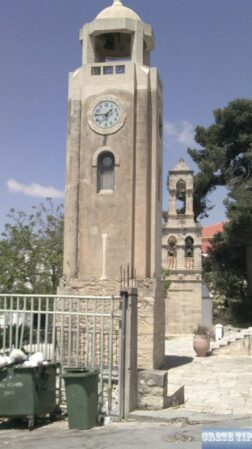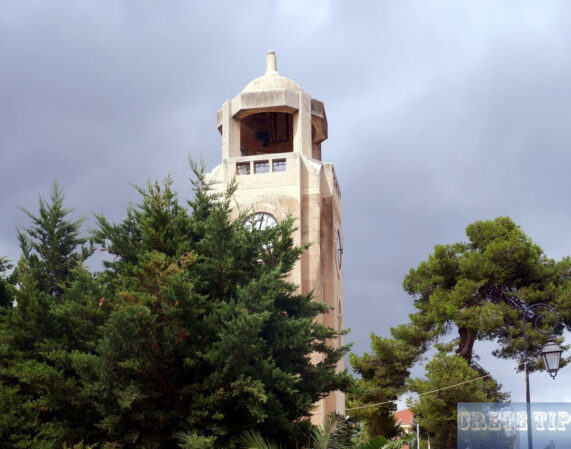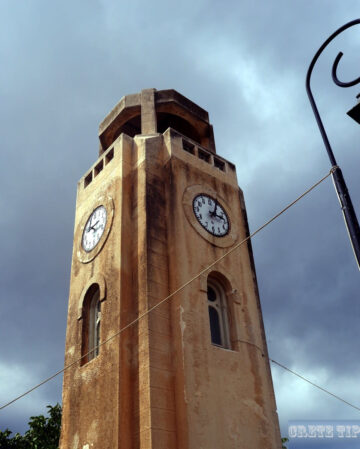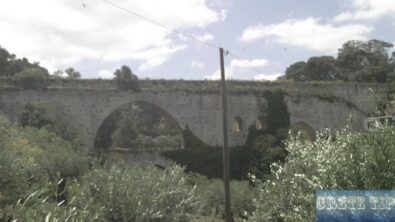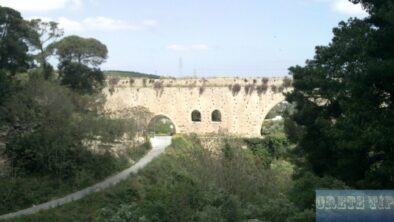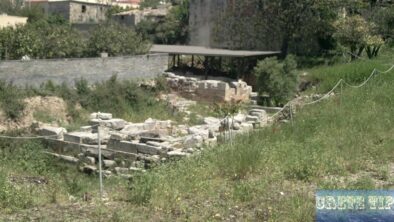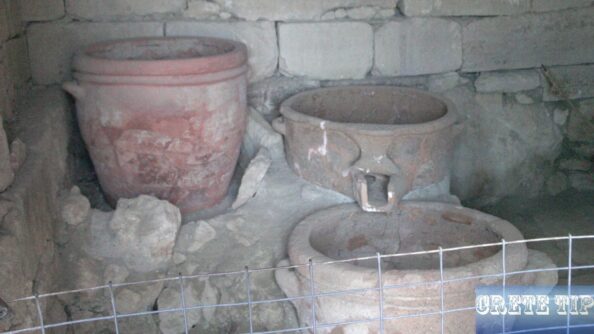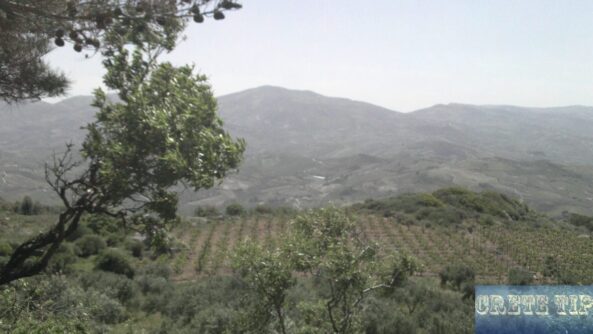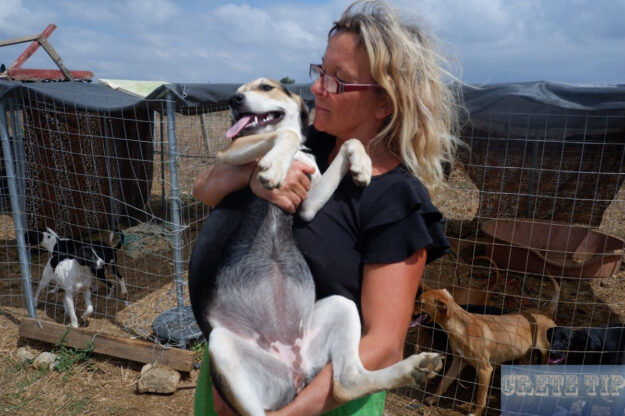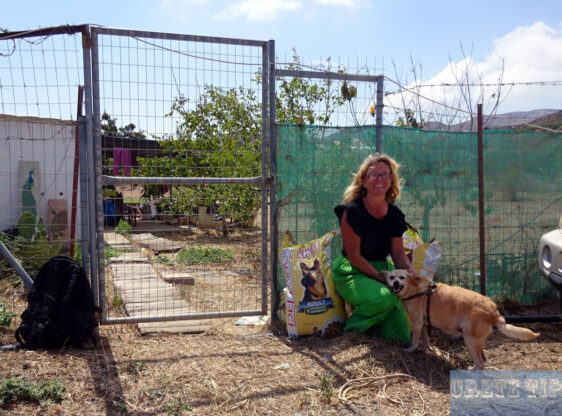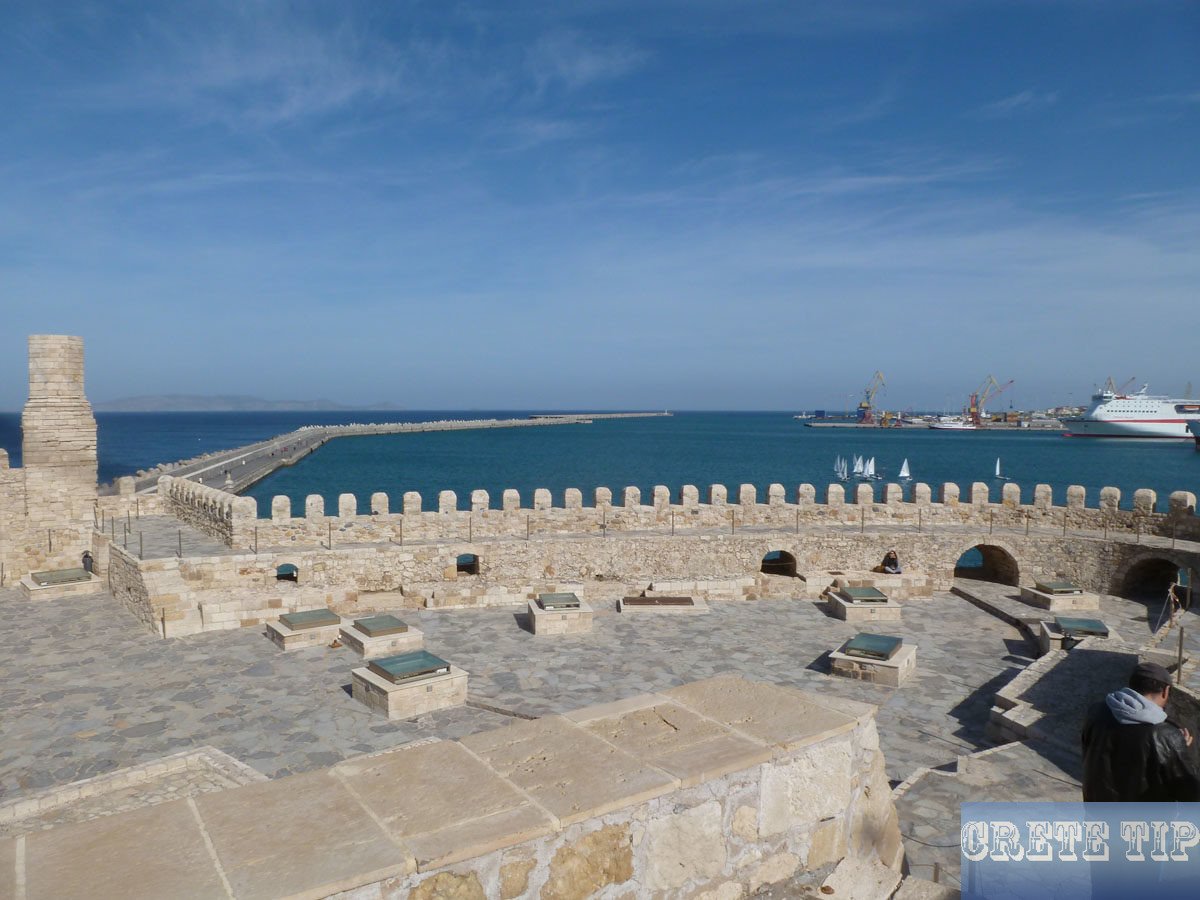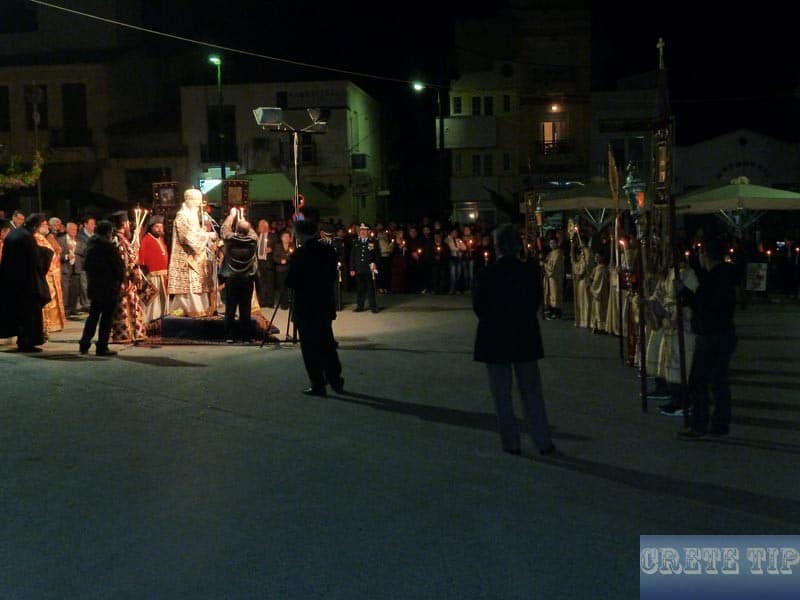Sightseeing of the wine region south of Heraklion: the Aqueduct, burial ground at Fourni, Arhanes and Minoan megaron of Vathypetro.
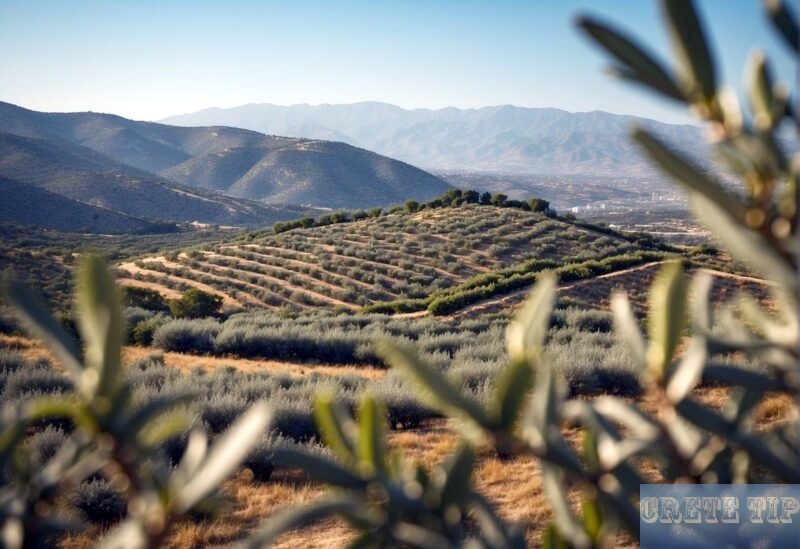
Arhanes, south of Heraklion
Table of Contents
Sightseeing south of Heraklion:
Aqueduct of Heraklion
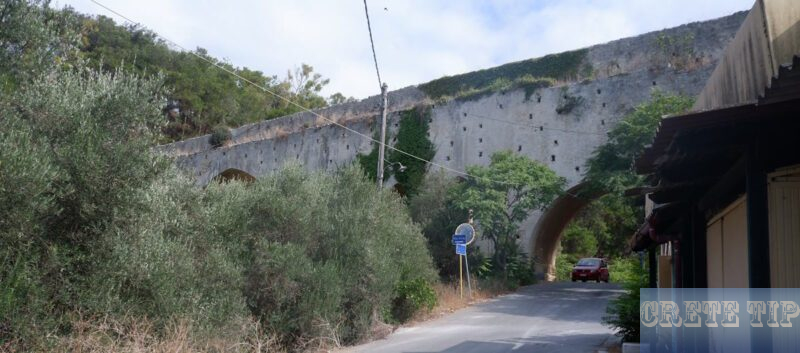
If one drives from Heraklion via Knossos in the southern direction, one reach the Venetian bridge of Ayia Irini after about 4.2 miles (7 km), where the remains of an extraordinary aqueduct are visible, which once supplied Heraklion with fresh water.
The aqueduct has a medieval or even ancient appearance, but is in reality not even two centuries old. It was built in the short time of the Egyptian administration of Crete in the years from 1832 to 1840.
A little further, at an inconspicuous crossroads where you turn to Arhanes, the German commander of Crete, General Kreipe, was kidnapped by British and Cretan agents during WW2 on April 26, 1944, and later brought to Egypt. The site is now marked with a monument.
Arhanes
After another 3.5 miles (6 km) you reach Kato Arhanes and 500 yards (0.46 km) further Epano Arhanes (or Archanes), which is a beautiful, historical village with many neoclassical buildings and the trading center of this wine-growing region. There are also wine tours into the region.

Churches in Arhanes
There are many churches with frescoes in and around Arhanes (Archanes) and at the ruin settlement of Asomatos, there is a small, arched church, dedicated to the Archangel Michael and has remarkable murals of 1315.
The church of Agia Triadha, with its Byzantine frescoes, is located on the outskirts of Arhanes and the church of Asomatos in the east, where the excellent works of the 14th century show a cruel depiction of the Crucifixion and the fall of Jericho with Joshua in full medieval armor.
It is best to find a parking place at the Panayia church, which is not to be overlooked, near the post office, as there are many one-way and winding streets. This church has a bell tower and icons.
Minoan Palace District in Arhanes
From the Panayia church, follow the road to the south and keep left after 100 yards (ca. 91 m). Then again the first alley to the left and then again to the right and you are in front of the area of the Minoan palace district in the middle of the village.
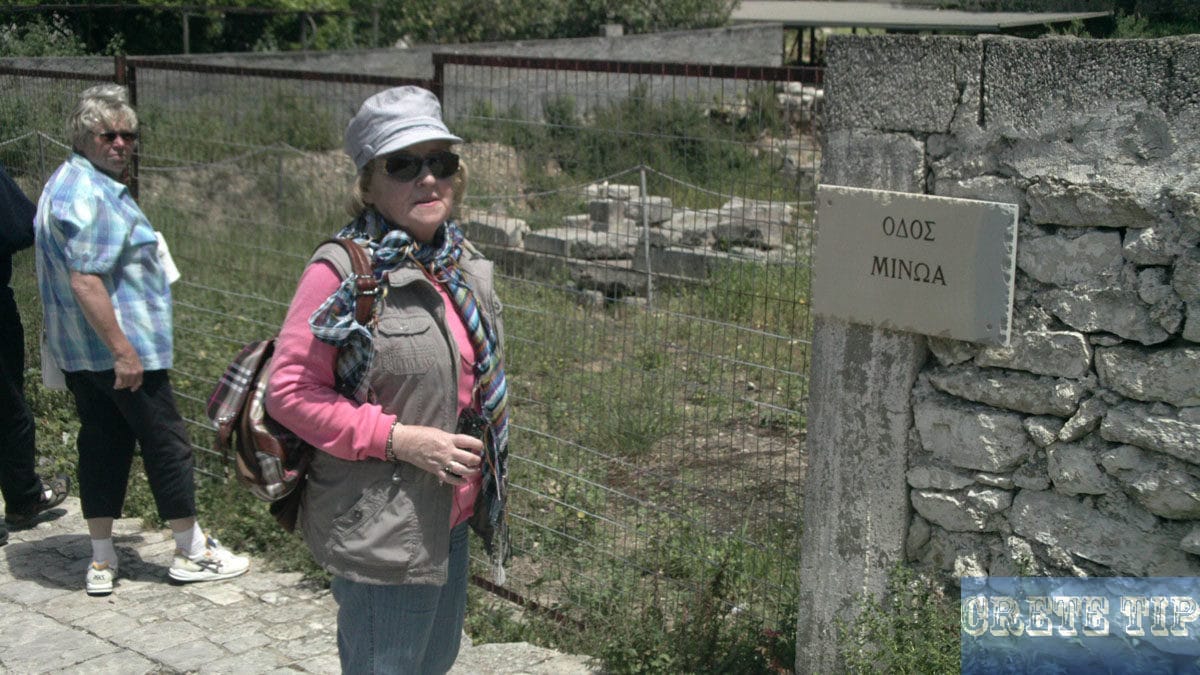
Here the existence of a significant Minoan city was already proved by excavations from the Prepalatial period (2,500-1,400 BC).
Minoan buildings and a small palace, which was rather a large villa and perhaps the summer residence of the priest-king of Knossos, were discovered in the former Turkish village of Tourkogitonia of Arhanes.
The buildings are from the time of 1,600 BC and were discovered by the archaeologist couple Efi and Jannis Sakellarkis, and since 1964 have gradually been excavated.
The excavations are located behind fences along the road between modern buildings and are gradually being continued.
The buildings were destroyed in 1,450 BC, but the place was still inhabited. In today’s town-name, the old name ‘Aharna’ (or ‘Archana’) which is proofed since 500 BC, still exists.
Archaeological Museum of Arhanes
The archaeological museum of Arhanes is located in the street Mihali Kalohristianaki, between the two one-way streets and about 80 yards (ca. 73 m) north of the main square.
The museum, which is imaginatively designed in a single room, shows some important originals and copies of finds from the excavations in the village and its surroundings.
Near the entrance are some well-preserved Minoan Larnaks (clay coffins, complete with the bones found in them) from the necropolis of Fourni.
Nearby is the copy of a sistrum, a simple and tambourine-style musical instrument from the year 2000 BC. This is probably the oldest, still existing musical instrument of Europe and it is also from the grave field from Fourni. The original is to be seen in the archaeological museum of Heraklion.
There are fascinating finds from the temple of Anemospilia, where a human sacrifice was offered during the collapse of the building. The temple is located about 2.5 miles (4 km) northwest of Arhanes on the northern slope of the Jouchtas and the route north of the Panayia church is well signposted.
The temple of Anemospilia was excavated in 1979 by the archaeologist couple Sakellarakis and contained a sensation. In the west was found the skeleton of a bound young man, in whose breast a nearly 16 inch (ca. 41 cm) long bronze dagger was. Two more skeletons were found in the room, a presumptive priest with rich jewelry and a presumptuous assistant woman.
Outside this room in a corridor was found the skeleton of another man slain by the chunks of stone, who was wearing a ritual vase.
The sacrificed youth was already dead when the building finally collapsed. Until this discovery, the Minoans were regarded as exemplary peaceful civilization, but this is the first clearly documented human sacrifice of Minoan culture.
The event happened at the same period – about 1,700 BC – as the destruction of the first palaces, which had to be caused by a huge earthquake.
A copy of the dagger found on the victim is displayed here in the museum. The dagger has slit the strange motif of a deformed wild boar on the blade. To this the copy of the seal ring, which the priest carried on his left wrist.
In the destroyed temple, a life-size clay feet were found, which must have belonged to a wooden cult statue and is also exhibited here. Life-size Minoan statues were not found anywhere else on Crete so far.
There are also frescoes from the walls of the small palace and pottery, which prove that the place had been populated for five thousand years. There are also exhibits from the Minoan, classical Greek, Roman, Byzantine, Venetian and Turkish periods.
Opening hours: Wednesday to Monday from 8:30am – 2:30pm, entrance free.
Burial ground at Fourni
The long existence of Arhanes testifies to the burial ground of Fourni, a hill about 1 miles (1.5 km) southwest of the village. It is the most important prehistoric cemetery in the entire Aegean.
The complex of the cemetery is fascinating, as there are early tholos tombs, dome graves and rectangular tombs from the Prepalatial to the Protopalatial times. In addition, there are six shaft graves surrounded by a Mycenaean wall, the only ones which have been found outside of Mycenae. In all of these graves numerous burial offers were found.
The dome grave (about 1.400-1.350 BC), found at the north end and the only one not looted until our times, had valuable gold, bronze and ivory offers, and must come from a royal burial. The finds are located in the archaeological museum of Heraklion.
Also, noteworthy are the buildings for the grave and necropolis cult, the so-called ‘cemetery service’ in the early days and also the view from the necropolis to the surrounding landscape is great.
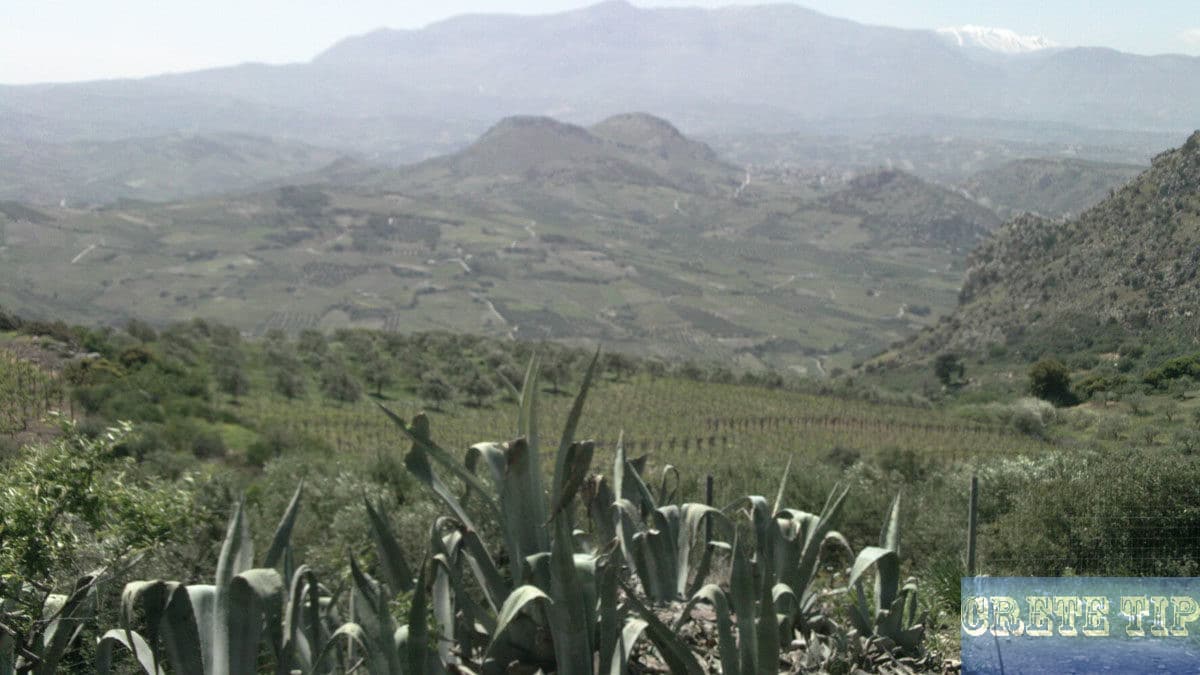
Minoan megaron of Vathypetro
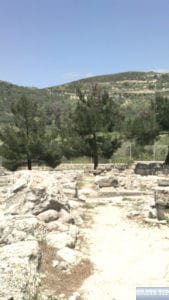
3 miles (5 km) south of Arhanes are the ruins of the Minoan megaron of Vathypetro (estate villa), built around 1600 BC.
The villa is located on the south-west side of Mount Juktas in the area of Livadia. From here one have a wonderful view in the middle of the vineyards and on the lower ground.
The exterior walls are made of cuboid (carved stone), while the interiors are of ordinary masonry. Perhaps some buildings were also two-storey and there were many rooms. However, only the western part was completed and the estate was abandoned after 50 years.
Some rooms are roofed and there is a central courtyard. Inside are restored workshops, including a very well-preserved wine-press, an olive press, pottery stoves and storerooms. In these are 16 huge ‘Pithoi’ vessels.
The place gives a good idea of the craft skills during the Minoan period.
Furever Happy Village animal shelter
The Furever Happy Village animal shelter is also located just 3.5 miles (5 kilometres) southeast of Archanes near Alagni. Katja Brakenhoff, who comes from Holland, lives here with her 30 or so dogs and is always happy to receive support and visitors!
Video of the visits south of Heraklion
Aqueduct of Heraklion, burial ground of Fourni, Panayia Church in Arhanes, Minoan megaron of Vathypetro:
(Duration 1 min 45 sec)
Directions to Arhanes
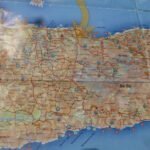 Link to map with directions:
Link to map with directions:
Click here: Directions Arhanes.


